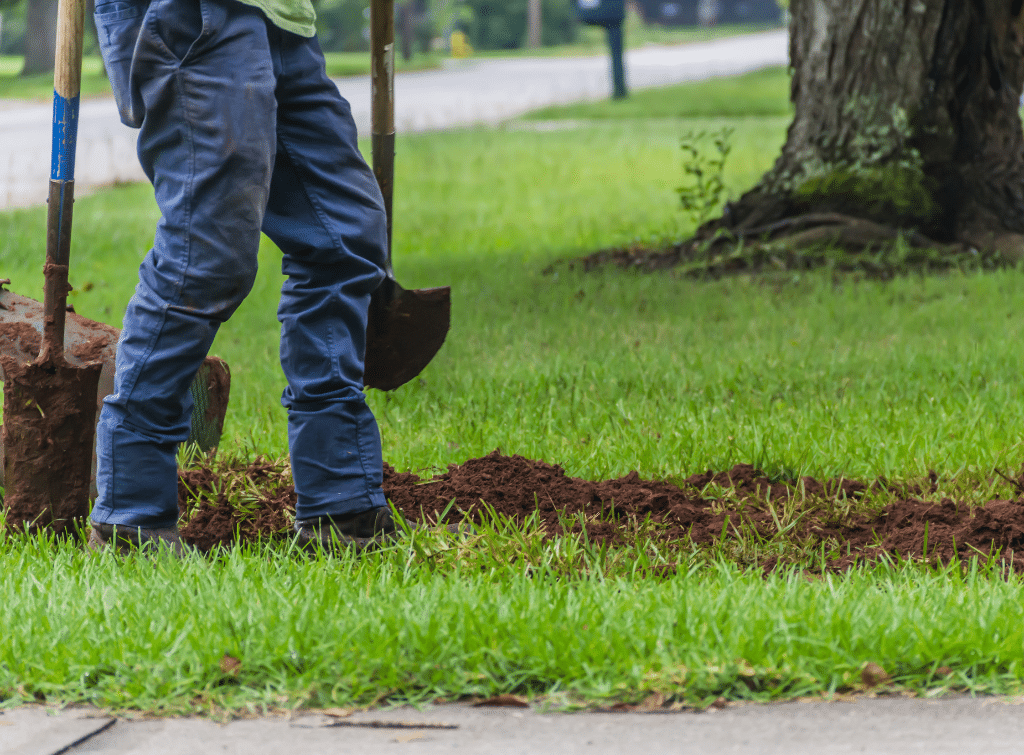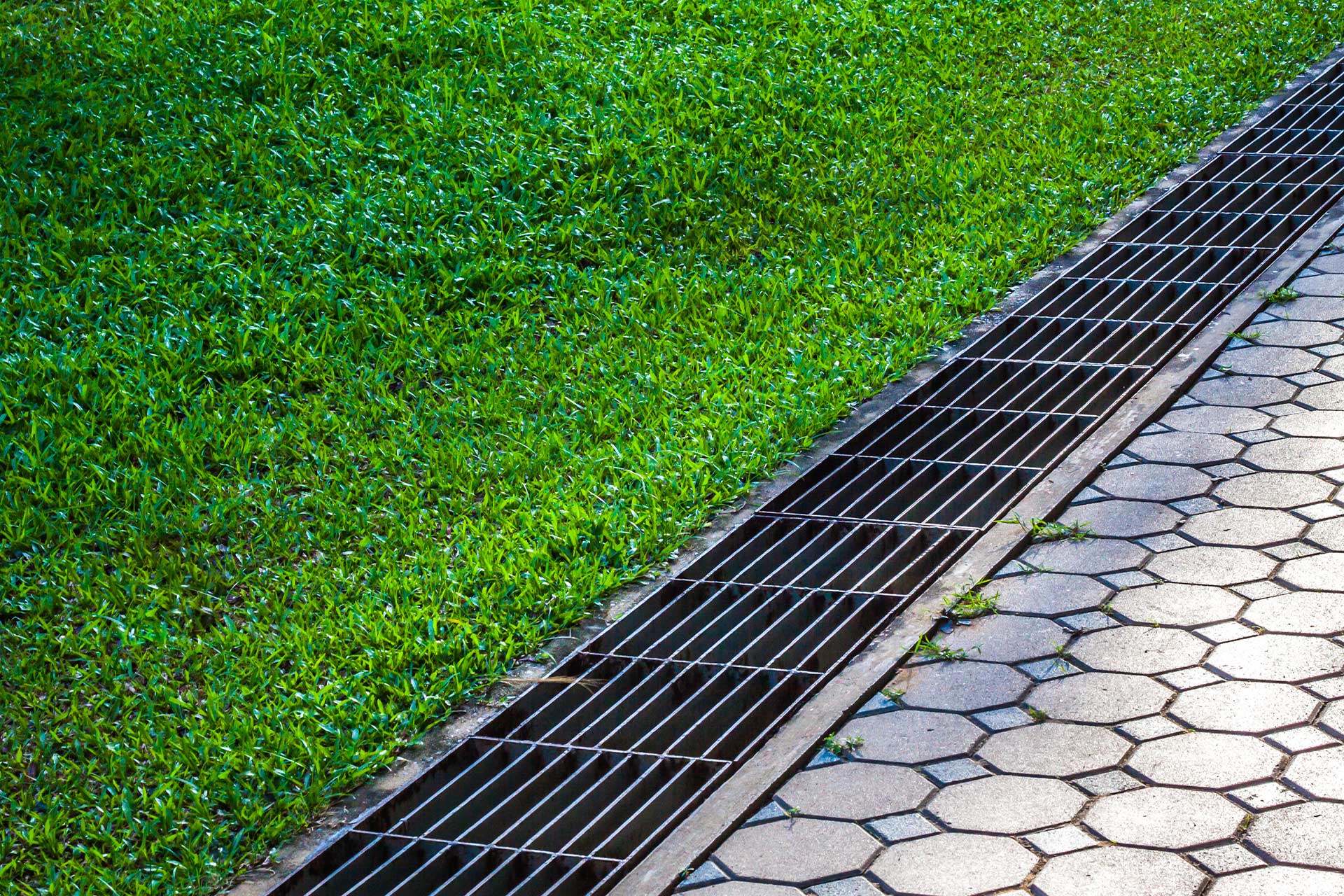Blog>Expert Advice>What is a herringbone drainage system?
Last updated: 18 October 2024
What is a herringbone drainage system?
We explain what a herringbone drainage system is, where it's best suited, and the practical considerations to understand before installing one.

What is a herringbone drainage system?
A herringbone drainage system is a network of drainage pipes arranged in a fishbone-like pattern, designed to efficiently remove excess water from lawns and gardens.
It's comprised of a main drain pipe laid on a downward slope with smaller branch pipes, called lateral pipes, which run into this main drain pipe at an angle.
The herringbone garden drainage system ensures that water is collected from multiple directions and channeled toward the main pipe. This then takes the water toward a soakaway or drain.
In this way, an effective drainage solution is created for large lawns and gardens that would otherwise be waterlogged due to heavy rainfall, a poor land slope, and/or dense clay soil.
See the tradespeople we've checked and recommend for your job
Why use a herringbone drainage system?
A herringbone French drain system offers many benefits, which is why it's used as an effective drainage system for lawns, gardens, and recreational spaces in the UK.
Advantages of herringbone drainage
Efficiency in water removal: Its unique design allows water to flow into the main pipe from multiple directions, helping large, waterlogged areas to drain more quickly
Versatility: A herringbone system of drainage can be adjusted to suit your land, whether it's sloped or flat, or just a little irregular in shape
Shallower trenches: A herringbone land drainage system does not require as much depth for excavated drains, compared with other solutions
Cost-effective: Compared with other options, a herringbone subsoil drainage system is more affordable with lower labour and material costs
Garden drainage system cost
Suffering from a swampy garden? You’re not alone. Garden drainage is a common issue for homeowners all over the UK. Thankfully there’s a solution and in this article we look at the average garden drainage system cost in the UK.
You could be rewarded for proactively managing the surface water runoff from your land. Find out more about surface water drainage rebates.
Practical considerations for installing a herringbone drainage system
Before you start tearing up your lawn, there are a few practical considerations to bear in mind when installing this type of drainage system.
How deep should herringbone drainage be?
In most cases, pipes should be buried at a depth of 300-600mm. However, this will depend on the severity of your waterlogging and the type of soil in your garden.
Sandy or loose soil? The pipes may need to be installed deeper
Heavy clay soil? The pipes may need to be placed slightly higher to ensure proper drainage
Which drainage pattern is best?
One of the key advantages of a herringbone drainage system is its unique layout of pipes, efficiently channeling water from a large area.
However, a grid pattern might be more suitable if you have a flat or standard-shaped area. A grid drainage system is often easier to install because it has fewer junctions.
Legal requirements
If your drainage system directs water towards a public drain or neighbouring properties, it's recommended to contact your local council. This will help you to understand if planning permission is required and ensure compliance with drainage regulations.
Contact or pay a trade through Checkatrade and you’re covered by our 12-month guarantee of up to £1,000*

Find a specialist contractor near you
An experienced drainage contractor or groundworker will assess your requirements and recommend the most suitable type of drainage system to install. They will also ensure compliance with drainage regulations.
Not only that, but they have the tools, equipment, and know-how to install a quality drainage system that'll offer a long-lasting solution for your waterlogged land.
Find skilled contractors in your area by searching your postcode, below.
See the tradespeople we've checked and recommend for your job
FAQs
What is a herringbone drainage system?
A herringbone drainage system is a network of pipes buried approx. 12-24 inches below ground in a fishbone-like pattern to drain excess water from grassed areas.
What are the advantages of herringbone drainage?
A herringbone drainage system is efficient, adaptable to various landscapes, and cost-effective when compared with other solutions.
What are the three types of drainage systems?
The three main types of drainage systems are surface drainage, subsurface, and slope drainage.
Surface drainage removes excess water from the surface of the land through channels or ditches
Subsurface drainage sits below the top layer of soil
Slope drainage channels excess water through pipes buried at an incline
What are the disadvantages of herringbone drainage?
A herringbone drainage system has a very specific pattern and therefore can be more complex to install. It may also require periodic maintenance to ensure the pipes are free from debris that could inhibit the water flow.
See the tradespeople we've checked and recommend for your job



